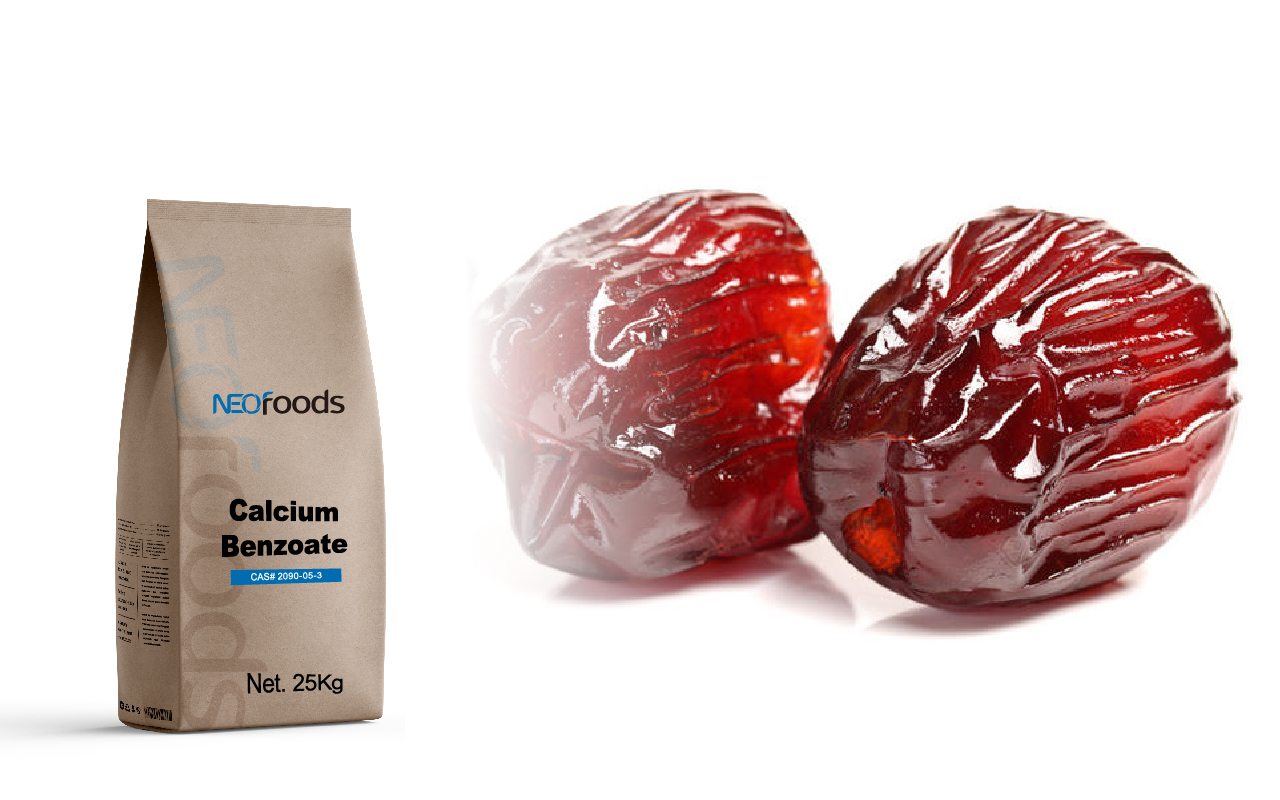
When comparing sodium benzoate vs. calcium benzoate, both are common food preservatives derived from benzoic acid. They play a vital role in extending shelf life, preventing microbial growth, and ensuring food safety. Although they share a similar origin, the two preservatives differ in chemical composition, solubility, and applications in food production.
1. Sodium Benzoate
Sodium benzoate is the sodium salt of benzoic acid and one of the most effective and affordable preservatives in the food industry.
High solubility: It dissolves easily in water, which makes it suitable for acidic beverages, fruit juices, sauces, and pickled foods.
Strong antimicrobial activity: Sodium benzoate prevents the growth of bacteria, yeast, and mold when the product’s pH is below 4.5.
Limitations: Its effect decreases in neutral or alkaline conditions, and it contributes to the product’s overall sodium content.
Overall, sodium benzoate remains popular due to its high efficiency, cost-effectiveness, and ease of use in large-scale food production.
2. Calcium Benzoate
Calcium benzoate, another derivative of benzoic acid, serves as a sodium-free alternative in specific applications where sodium reduction is a priority.
Moderate solubility: While less soluble than sodium benzoate, it remains effective in a wider range of pH conditions.
Sodium-free option: Because it contains little to no sodium, calcium benzoate is ideal for low-sodium or health-oriented foods.
Versatile usage: It is often used in dairy products, jams and jellies, and certain baked goods where sodium reduction is desired.
This makes calcium benzoate a preferred option in modern formulations emphasizing clean labels and reduced sodium content.
3. Sodium Benzoate vs. Calcium Benzoate: Key Differences
| Aspect | Sodium Benzoate | Calcium Benzoate |
| Solubility | High | Moderate |
| Effective pH Range | Acidic (pH < 4.5) | Acidic to neutral |
| Sodium Content | High | Very low |
| Antimicrobial Power | Strong in acidic foods | Consistent across wider pH |
| Common Uses | Drinks, sauces, jams | Baked goods, soy products |
In short, the sodium benzoate vs. calcium benzoate comparison highlights how manufacturers can balance performance, solubility, and sodium content depending on the product type.
4. Regulatory Limits and Food Industry Use
Both preservatives are approved by the FDA, EFSA, and other food authorities. The maximum allowed concentration in most foods is 0.1% (1,000 mg/kg). They must be listed on product labels and are most effective in acidic environments. In practice, sodium benzoate is used in beverages and sauces,while calcium benzoate is selected for low-sodium products, certain dairy items, and jams.
Conclusion
To summarize, sodium benzoate vs. calcium benzoate offers two safe and reliable preservation choices. Sodium benzoate provides strong antimicrobial power and excellent solubility, whereas calcium benzoate offers a low-sodium, health-friendly alternative. Both help maintain product freshness, safety, and quality under proper food regulations.
For further product information or to obtain samples, please feel free to contact us. Neofoods can provide you with professional solutions and customized support, helping your formulations achieve greater stability and production efficiency.





Contact us